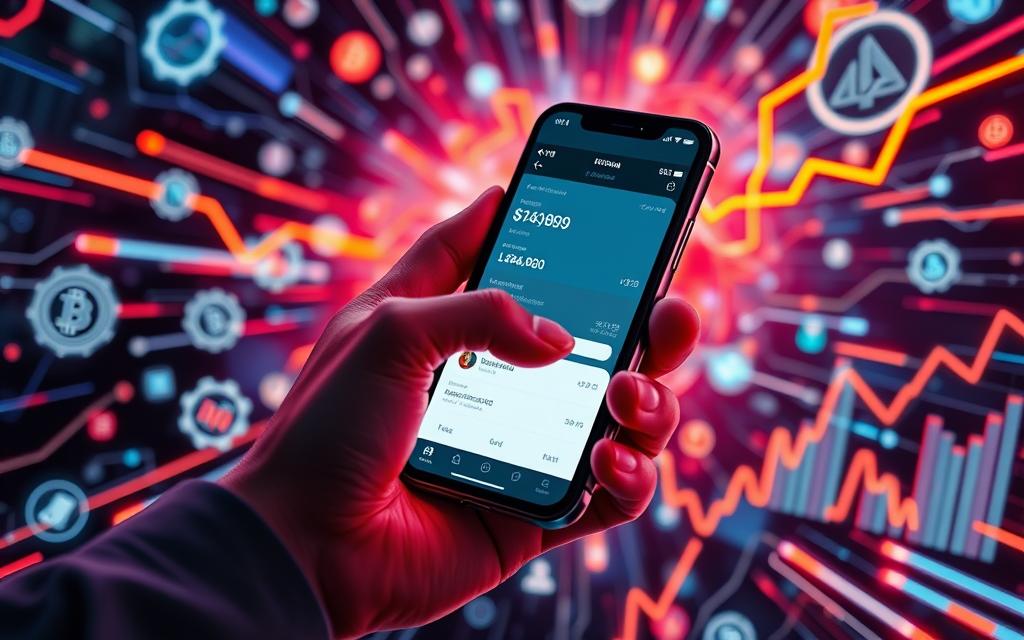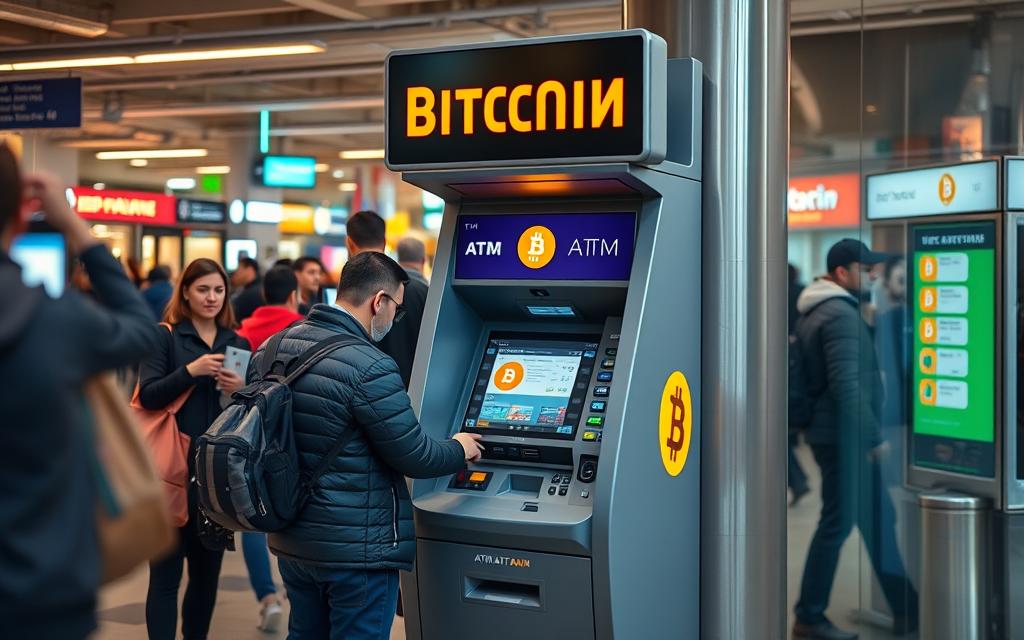Table of Contents
The time it takes for a Bitcoin transaction to be confirmed can vary significantly, typically ranging from 10 minutes to over an hour.
Understanding the Bitcoin transaction process is crucial for users who want to optimize their experience. The blockchain technology underlying Bitcoin processes transactions, and confirmation times are an essential security feature.
Multiple factors influence transaction time, including network congestion and transaction fees. As the network is decentralized, transaction times can fluctuate.
Understanding Bitcoin Transactions
To grasp the concept of Bitcoin transactions, it’s essential to understand the underlying technology that facilitates them. Bitcoin transactions are a fundamental aspect of the cryptocurrency, allowing users to transfer value across the network.
What Is a Bitcoin Transaction?
A Bitcoin transaction is a transfer of value between two parties that’s recorded on a public ledger called the Bitcoin blockchain. When you make a Bitcoin transaction, it needs to be approved by the network before it can be completed. This process involves broadcasting the transaction to the entire Bitcoin network, where it waits to be verified and added to the blockchain.
The Bitcoin community has set a standard of 6 confirmations that a transfer needs before you can consider it complete. This ensures that the transaction is secure and irreversible.
The Role of the Blockchain
The blockchain serves as the backbone of Bitcoin, functioning as a distributed public ledger that permanently records all transactions. The blockchain’s structure is what gives Bitcoin its security and immutability—once a transaction is recorded, it cannot be altered or deleted.
- The blockchain contains multiple transactions in each block, along with a reference to the previous block and a solution to a complex mathematical problem that validates the block.
- This chain structure creates a chronological and verifiable history of all Bitcoin transactions ever made.
- The decentralized nature of the blockchain means that no single entity controls the verification process, enhancing security but also affecting transaction times.
| Key Features of the Blockchain | Description |
|---|---|
| Decentralized | No single entity controls the verification process |
| Immutable | Transactions cannot be altered or deleted once recorded |
| Transparent | All transactions are recorded on a public ledger |
Understanding the blockchain’s role helps explain why Bitcoin transactions aren’t instantaneous—they require consensus from the network to be confirmed. This process is crucial for maintaining the integrity and security of the Bitcoin network.
The Bitcoin Transaction Process
The journey of a Bitcoin transaction from initiation to confirmation involves several key steps. Understanding these steps is essential for grasping how Bitcoin operates and how transactions are secured on the blockchain.
From Wallet to Mempool
A Bitcoin transaction begins when a user initiates a transfer from their wallet. The transaction is broadcast to the Bitcoin network, where it is verified by nodes and added to the mempool, a holding area for unconfirmed transactions. The time a transaction spends in the mempool can vary depending on network congestion and the fee attached to the transaction. Transactions with higher fees are typically processed more quickly as they are more attractive to miners.
Mining and Verification
Mining is the process by which transactions are verified and added to the blockchain. Miners collect transactions from the mempool, verify their legitimacy, and compile them into a block. This process involves solving complex mathematical puzzles, which requires significant computational power. The first miner to solve the puzzle gets to add their block to the blockchain and broadcast it to the network. The transactions within this block are then considered confirmed, with the first confirmation occurring when a transaction is included in a block.

Confirmation Process
Once a transaction is included in a block, it receives its first confirmation. Each subsequent block added to the blockchain represents an additional confirmation for the transactions in the previous blocks. Most services require multiple confirmations before considering a transaction complete, typically between 3 to 6 confirmations. For instance, a transaction is considered secure after six confirmations, which usually takes around 60 minutes under normal network conditions. The confirmation process is crucial for security, as each confirmation makes it exponentially more difficult to reverse or alter a transaction.
| Number of Confirmations | Approximate Time | Security Level |
|---|---|---|
| 1 | ~10 minutes | Low |
| 3 | ~30 minutes | Moderate |
| 6 | ~60 minutes | High |
As emphasized by the Bitcoin whitepaper, “the probability of an attacker catching up with the honest chain decreases exponentially as the number of confirmations increases.” This highlights the importance of waiting for multiple confirmations to ensure the security of a transaction.
How Long Does a Bitcoin Transaction Take?
Understanding how long Bitcoin transactions take is essential for both new and experienced users. The transaction time is influenced by several factors, including the block confirmation process and the overall network congestion.
Average Confirmation Times
The average time for a Bitcoin transaction to be confirmed is closely tied to the creation of new blocks on the blockchain. A new block is typically added every 10 minutes, which is the average block time. However, the transaction itself may require multiple confirmations to be considered secure.
Single vs. Multiple Confirmations
A single confirmation means that the transaction has been included in one block on the blockchain, providing a basic level of security. On the other hand, multiple confirmations occur as new blocks are added on top of the block containing the transaction, with each additional block making the transaction more secure.
- A single confirmation is often sufficient for small transactions.
- Multiple confirmations are required for larger transactions or by services that need higher security.
- The number of confirmations required can vary: some services may need 3 confirmations, while others may require 6.
Waiting for multiple confirmations is a security measure that protects against double-spending attacks and blockchain reorganizations. Users can often choose to accept fewer confirmations for smaller transactions, reducing wait times.
Factors Affecting Bitcoin Transaction Speed
The speed at which Bitcoin transactions are processed is influenced by several key factors. Understanding these factors is essential for users to optimize their transaction experience.
Network Congestion
Network congestion occurs when there is a high volume of transactions on the Bitcoin network, causing a backlog. This congestion can slow down transaction processing times. When the network is congested, transactions with higher fees are prioritized by miners, potentially leaving lower-fee transactions to wait longer for confirmation.

Transaction Fees
Transaction fees play a crucial role in determining the speed of Bitcoin transactions. Miners prioritize transactions based on the fee attached to them. Transactions with higher fees are more likely to be included in the next block, while those with lower fees may be delayed. Users can adjust their transaction fees according to their urgency.
Transaction Size
The size of a Bitcoin transaction, measured in bytes, also impacts its processing speed. Larger transactions require more data to be processed and are typically more expensive. Using features like Segregated Witness (SegWit) can reduce the size of a transaction, making it faster and cheaper to confirm.
Miner Availability
The number of active miners on the Bitcoin network directly impacts how quickly transactions are processed. Factors such as miner profitability, geographic distribution, and seasonal variations in energy availability can influence miner activity. A strong global hash rate indicates a secure and active network.
| Factor | Impact on Transaction Speed | Mitigation Strategy |
|---|---|---|
| Network Congestion | Slows down transaction processing | Use higher transaction fees |
| Transaction Fees | Higher fees prioritize transactions | Adjust fees according to urgency |
| Transaction Size | Larger transactions are slower | Use Segregated Witness (SegWit) |
| Miner Availability | Affects overall network performance | Monitor global hash rate for network security |
The Impact of Transaction Fees
Bitcoin fees, though not mandatory, have a substantial effect on the speed of transaction processing. Transaction fees are usually set by the user creating the block of transaction data to be mined. These rates and their dependent wait times vary as traffic ebbs and flows.
How Fees Prioritize Transactions
Transaction fees play a crucial role in prioritizing transactions within the Bitcoin network. Miners tend to prioritize transactions with higher fees because they are incentivized by the potential revenue. This means that users who are willing to pay a higher transaction fee are more likely to have their transactions confirmed quickly.
Most modern Bitcoin wallets include fee estimation tools that analyze the current mempool and suggest appropriate fee levels for different confirmation time targets. For instance, fee estimators typically offer options like “fast” (likely to confirm in the next block), “medium” (within a few blocks), and “slow” (potentially several hours).
Setting Optimal Fee Rates
Setting the optimal transaction fee requires balancing cost against desired confirmation speed based on the current network conditions. During periods of low network congestion, even transactions with minimal fees can confirm relatively quickly, making it an optimal time to send lower-priority transactions.
Users can monitor fee rates through services like mempool.space, which provide real-time data on what fee levels are currently being accepted into blocks. Some users employ a strategy of sending transactions during weekends or overnight when network activity typically decreases, allowing for lower fees.

Advanced users can manually set custom fees based on their own analysis of current network conditions, potentially saving on transaction costs. By understanding how transaction fees impact the Bitcoin network, users can make informed decisions about their transactions.
Confirmation Requirements by Different Services
The number of confirmations required for a Bitcoin transaction varies significantly across different services. This variation is largely due to the differing risk tolerance and security needs of these services.
Exchange Requirements
Cryptocurrency exchanges have different policies regarding the number of confirmations required for a transaction to be considered valid. Some exchanges require as many as six confirmations for large transactions, which can take about an hour to confirm. For instance, when transferring a significant amount of cryptocurrency to a company, some may necessitate multiple confirmations to ensure the transaction’s security.
Merchant Requirements
Merchants accepting Bitcoin payments also have varying confirmation requirements based on their risk tolerance and the value of goods being sold. For small purchases, many merchants accept zero-confirmation transactions, allowing for immediate completion of the sale. In contrast, for higher-value items, merchants typically require 1-3 confirmations to balance security needs with customer convenience. Some high-value merchants may even require the full six confirmations before finalizing a transaction.
- Payment processors like BitPay offer customizable confirmation requirements based on transaction value thresholds.
- Point-of-sale systems for Bitcoin often include risk assessment algorithms that suggest appropriate confirmation requirements.
- The trend among merchants has been toward accepting fewer confirmations as confidence in the Bitcoin network has grown.

How to Speed Up Bitcoin Transactions
Enhancing the speed of Bitcoin transactions is possible with the right approaches. Users can adopt several strategies to expedite their transactions, ensuring they are processed efficiently.
Replace-By-Fee (RBF) Option
The Replace-By-Fee (RBF) option allows users to increase the fee of an unconfirmed transaction, making it more attractive to miners. By enabling RBF, users can speed up Bitcoin transactions that are taking longer than expected due to low fees. This feature is particularly useful during times of network congestion. To learn more about speeding up Bitcoin transactions, visit this resource.
Using SegWit Transactions
Segregated Witness (SegWit) transactions offer another way to accelerate Bitcoin transactions. By using SegWit, users can reduce the transaction size, thereby decreasing the overall load on the network. This results in lower fees and faster confirmation times. SegWit is a protocol upgrade that optimizes the way data is stored in a block.
Timing Your Transactions
Strategic timing of Bitcoin transactions can significantly reduce fees and confirmation times. Monitoring network activity and transacting during off-peak periods can help avoid congestion. Typically, weekends and overnight hours (UTC time) see lower transaction volumes and fees. Using tools like mempool visualization can aid in identifying optimal transaction times.
| Strategy | Description | Benefits |
|---|---|---|
| RBF | Increasing the fee of an unconfirmed transaction | Faster confirmation times |
| SegWit | Reducing transaction size | Lower fees, faster times |
| Timing | Transacting during off-peak periods | Avoiding network congestion |

Bitcoin Scaling Solutions
As Bitcoin continues to grow, the need for scalable transaction solutions becomes increasingly important. The Bitcoin network has faced challenges with scalability, and several solutions have been proposed or implemented to address these limitations.
The Lightning Network
The Lightning Network is a significant scaling solution for Bitcoin, enabling faster and cheaper transactions. It operates as a second-layer scaling solution, allowing for off-chain transactions that are then settled on the Bitcoin blockchain. This approach significantly reduces transaction fees and enhances the overall efficiency of the network.
The Lightning Network has gained popularity due to its ability to facilitate instant transactions, making it an attractive option for users. Its implementation has shown promising results in reducing congestion on the Bitcoin network.
Other Scaling Proposals
Beyond the Lightning Network, several other scaling solutions have been proposed or implemented. Some of these include:
- Sidechains like Liquid Network, which offer an alternative approach by creating a separate blockchain pegged to Bitcoin, allowing for faster settlements and additional features.
- The Taproot upgrade, activated in November 2021, which improves Bitcoin’s smart contract capabilities and transaction efficiency.
- Proposals like Statechains, which allow for off-chain transfer of entire UTXOs (unspent transaction outputs) without requiring on-chain transactions.
- Cross-chain atomic swaps, enabling trustless trading between Bitcoin and other cryptocurrencies, potentially offloading some transaction volume to other networks.
These solutions aim to enhance the scalability and usability of the Bitcoin network, addressing the issue of high fees and slow transaction times. By leveraging these innovations, users can enjoy faster and more cost-effective transactions on the Bitcoin blockchain.
Using Bitcoin ATMs for Faster Transactions

Bitcoin ATMs provide a fast and straightforward way to buy cryptocurrency. These machines are becoming increasingly popular due to their convenience and speed.
How Bitcoin ATMs Work
Bitcoin ATMs allow users to purchase cryptocurrency using cash or debit cards. The process typically involves verifying the user’s identity, selecting the desired transaction, and confirming the details. This process usually takes a few minutes, making it significantly faster than traditional banking transactions or online exchange processes, which can take several days.
The transaction is processed on the Bitcoin network, and the purchased cryptocurrency is sent directly to the user’s wallet.
Benefits of ATM Transactions
Using Bitcoin ATMs offers several advantages, particularly for users who value speed and simplicity. Some key benefits include:
- Immediate access to cryptocurrency without waiting for exchange account approvals or bank transfers.
- A secure way to purchase Bitcoin without exposing banking details or personal information online.
- Valuable in regions with limited banking infrastructure, providing access to the global financial system.
- Many Bitcoin ATM operators offer customer support services for users who encounter issues during transactions.
With over 30,000 Bitcoin ATMs worldwide, users can access cryptocurrency from almost anywhere, making it a reliable infrastructure for transactions on the Bitcoin network.
Conclusion
The speed at which Bitcoin transactions are processed depends on a combination of factors, including network congestion, transaction fees, and the number of confirmations required.
Understanding these elements empowers users to optimize their Bitcoin experience. For time-sensitive transactions, paying higher fees remains the most reliable method to ensure faster processing. The Lightning Network represents a promising scaling solution, enabling near-instant transactions with minimal fees.
As Bitcoin adoption continues to grow, innovations like Segregated Witness will improve the network’s capacity and transaction efficiency. While transaction times and fees fluctuate, Bitcoin’s core value proposition as a decentralized, censorship-resistant payment network drives its growing global adoption.
New users can benefit from starting with small test transactions and using reputable wallets with dynamic fee estimation. The balance between security and speed remains a fundamental consideration when using Bitcoin.
FAQ
What is the average time for a Bitcoin transaction to be confirmed?
The average confirmation time for a Bitcoin transaction is around 10 minutes, which is the time it takes for a new block to be added to the blockchain. However, this time can vary significantly due to factors like network congestion and transaction fees.
How do transaction fees impact the speed of Bitcoin transactions?
Transaction fees play a crucial role in determining the speed of Bitcoin transactions. Miners prioritize transactions with higher fees, so setting a higher fee can result in faster confirmation times. Conversely, lower fees may lead to longer wait times.
What is the Lightning Network, and how does it improve transaction times?
The Lightning Network is a second-layer scaling solution for Bitcoin that enables faster and cheaper transactions. By allowing multiple transactions to be processed off-chain and then settled on the blockchain, the Lightning Network reduces congestion and increases transaction speeds.
Can I speed up a pending Bitcoin transaction?
Yes, there are ways to speed up a pending Bitcoin transaction. One option is to use the Replace-By-Fee (RBF) feature, which allows you to increase the transaction fee and prioritize the transaction. Another option is to use SegWit transactions, which can also result in faster confirmation times.
How many confirmations are required for a Bitcoin transaction to be considered secure?
The number of confirmations required for a Bitcoin transaction to be considered secure varies depending on the service or merchant. Some exchanges and merchants require multiple confirmations, while others may accept a single confirmation. Generally, more confirmations provide greater security.
What factors contribute to network congestion on the Bitcoin network?
Network congestion on the Bitcoin network can be caused by a high volume of transactions, large transaction sizes, and limited block space. When the mempool is filled with unconfirmed transactions, it can lead to slower transaction times and higher fees.
How does the size of a Bitcoin transaction affect its processing time?
The size of a Bitcoin transaction can impact its processing time, as larger transactions require more block space and may be prioritized lower by miners. Using SegWit transactions can help reduce transaction sizes and improve processing times.
Are there any alternatives to the Bitcoin network for faster transactions?
Yes, there are alternative cryptocurrency networks and solutions that offer faster transaction times, such as the Lightning Network. Additionally, some Bitcoin ATMs and exchanges may provide faster transaction processing times, although these may come with additional fees.









